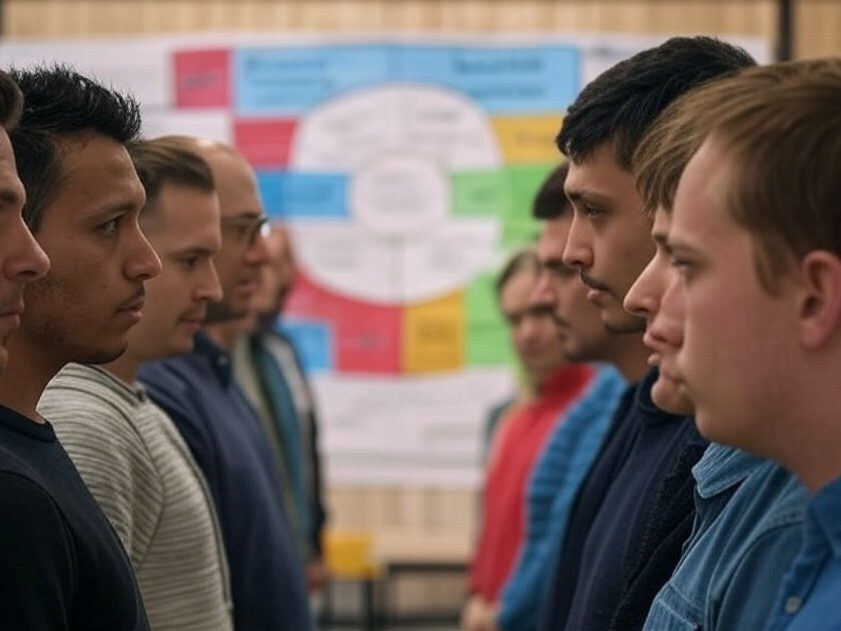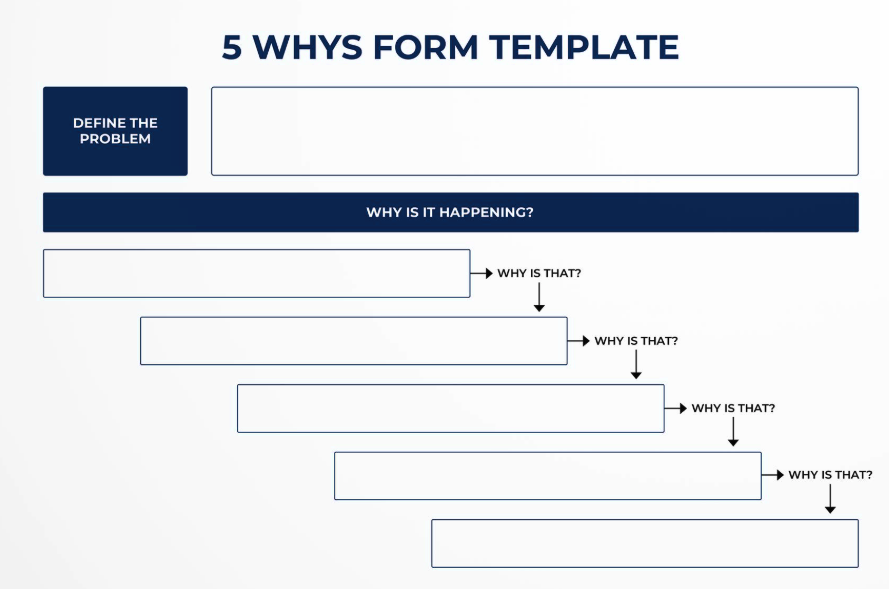These days, I have been thinking about a class I attended during my time at university, where the professor of industrial projects explained different techniques for detecting and solving problems during projects. I remember how he insisted on knowing how to differentiate certain concepts that we sometimes handle interchangeably when we shouldn’t: conflict, consequence, cause, problem. Misuse of these concepts or their interpretation can lead to false conclusions when trying to resolve a problem or to ineffective and even counterproductive decisions. The example he used in that class was that of a nursing home where the elderly people who were admitted there complained to the management because they were cold. We will analyze it together with other examples, but first let’s look at the differences between these concepts.
“The first task of any theory is to clarify terms and concepts that are confused, and, one might even say, have become thoroughly entangled. Only after agreement has been reached regarding terms and concepts can we hope to consider the issues easily and clearly, and expect to share the same viewpoint…” “On Wardz”, Carl von Clausewitz, 1833
Problem
A problem is an unfavorable situation that requires a solution; a situation that makes it difficult to achieve desired objectives or goals. Problems are usually specific and objective, such as a system error or a decrease in sales. In the business context, problems can arise for a variety of reasons, such as technological failures, market changes, or incorrect strategic decisions. Identifying a problem is the first step towards solving it, and doing so accurately and efficiently can save valuable time and resources.
Example: An office chair model has been released on the market, but people are returning it shortly after use because they feel discomfort when sitting. The company has a problem, as it produces and sells, but the products it has already sold are being returned.
Conflict
Conflict, on the other hand, refers to a situation in which two or more parties have opposing interests or perspectives that lead to difficulties in collaborating effectively.
Conflicts can arise between employees, departments, or even between the company and its customers or suppliers and they tend to involve emotions and human relationships.
Conflict resolution usually requires negotiation and communication skills, people management, and an understanding of the concerns and motivations of the parties involved.
Example: in the chair factory there may be one department that wants to invest more in design and another that wants to invest more in quality.
Problem vs. Conflict: While a problem is a situation that requires a solution, conflict implies a struggle between two or more parties, ideas or values.
A conflict can lead to a problem and a problem can generate a conflict.
In the first case, it may be that the procurement department does not talk to the design or quality department and orders materials that cannot be applied to the designs produced with sufficient quality (in this case, a conflict leads to a problem). Or it may be that all the departments work perfectly in harmony, but when the returns start, everyone starts blaming each other (the problem has generated a conflict).

Consequence
Consequence refers to the effects or results that derive from a problem or conflict. Consequences can be of different kinds and be positive or negative depending on the situation. On many occasions, the consequences are unexpected and can spread quickly, creating secondary consequences. Also, as we have seen, a problem can be the consequence of a conflict and vice versa.
Example: Returning the chairs may result in a reduction in customer confidence, a reduction in income, an increase in costs… All of this could lead to budget cuts, employee layoffs and a decline in team morale.
And why is all this happening? It is because of the cause (or causes).
Cause
The cause refers to the origin or underlying reason for a problem or conflict. Identifying the root cause is crucial to implementing effective solutions. Not finding the right cause or not eliminating it correctly will cause the problem or conflict to recur. Causes can be both internal and external and can range from human error to system failures or changes in the business environment.
Example: The cause may be that the density of the seat foam is not sufficient and that with little use it loses thickness.
Another aspect to take into account is that many times the cause is a consequence of another cause, and we must continue investigating.
Example: The reason why the seat foam deteriorates so quickly is that the density was not specified in the design and in production the decision was made to use the same foam for the seat as for the backrest. The density was not specified in the design because the person who did the design assumed that only one type of foam for seats would be used in production. The person who did the design did not know that it was compulsory to indicate the quality of the foams because it was not specified in the procedural details.
By solving the root cause (not an easy thing to find), we can ensure that the problem or conflict does not arise again.
Consequence vs. Cause: The consequence is what happens next, while the cause is what starts the chain of events.
In summary
- Problem: This is the unwanted situation that requires a solution (for example, a drop in sales).
- Conflict: This is the dispute or disagreement between parties (for example, a dispute over resources between departments).
- Consequence: This is the effect or result of a problem or conflict (for example, a reduction in income and team morale).
- Cause: The underlying reason that gives rise to the problem or conflict (for example, lack of training or information).
The nursing home and other cases
In the example of the nursing home, we were told that several of the residents complained to the management because they were cold. There was a conflict between the management and the residents. But why did this conflict arise?
In the first instance it was because the radiators weren’t heating. But we have to find out why the radiators aren’t working. We might think that since the radiator isn’t working, the problem is with the radiator, and change it. But it’s possible that we’re only trying to solve a symptom or a problem, and not the cause.
It may be the boiler that is not working. By changing the radiator (which may be the most visible part of the problem) we would only be wasting money, thinking that we are solving the situation, but it would not be the case. We have to look for the real cause, the root cause. This could be the boiler, more specifically a valve.
It may be the case that the problem appears to be solved by acting on the cause, but it may only be an illusion. In the case of the boiler, it may be that when the valve is changed, everything works perfectly for a few months and then we are back to the same situation. It could be the used diesel, which has impurities and clogs the valve. Changing the valves only temporarily solves the problem because it is the cause of the boiler not working, but it is not the root cause. In this case, it would involve changing the diesel supplier to one of higher quality.
Another very graphic example that I often use to make people think and not try to solve a problem without tackling the cause is that of leaks.
When a damp stain appears on the wall, this is the consequence (which can lead to conflicts between us and the insurance company or even within the family). In no case is painting the wall the definitive solution. It may solve the problem momentarily, but the stain will reappear in the same place or somewhere else, since the water infiltration is still there. So, the solution to the root cause in this case is to fix the hole in the roof that is causing the water to leak, not just to paint the wall.

Examples from the organizational environment could be:
Case 1
- Conflict: The marketing department wants to launch an aggressive campaign before a certain date and the technical team is strongly opposed.
- Problem: For the dates that marketing wants to launch the campaign, the product is not yet finished and they do not yet know if there will even be delays.
- Consequence: Deterioration of the work environment, increased pressure on teams, delays in product launch.
- Possible causes: Lack of communication, misaligned (or conflicting) objectives between departments, lack of joint planning between departments.
- Potential solutions: Implement aligned objectives between departments (or groups), regular interdepartmental meetings to share projects, concerns, status…
Case 2
- Problem: A tech startup experiences an increase in the user churn rate.
- Conflict: Development and marketing teams disagree on whether to prioritize technical improvements or retention campaigns.
- Consequence: Loss of credibility and potential subscription income.
- Possible causes: The user interface is not intuitive, which was not detected in the testing phases.
- Potential solutions: Invest in fixing the interface and then carry out retention campaigns with a focus on advertising the new interface. Implement improvements in the testing process.
Techniques for Discovering the Causes of Problems and Conflicts
Detecting the underlying causes of problems is key to acting far beyond the superficial symptoms and preventing the problems from recurring.
It is not always easy to discover the causes, much less the root causes, but we have several techniques that can help us achieve this.
- 5 Whys Analysis
This consists of repeatedly asking “why?” until the root cause is reached.
Example: Why isn’t the boiler working? → Because the valve is not working.
Why is this happening? → Because it has impurities in the diesel.
Why does this happen? → Because the diesel is of a lower quality.
Why does this happen? → Because the allocated budget is not enough to buy a better quality one.
(comment: this could lead to us saving 10 on diesel and spending 20 on repairs, as well as having conflicts) - Ishikawa diagram (Fishbone diagram)
This method organizes possible causes into categories such as technology, processes, people or materials.
Example: If a project is delayed, it can be analyzed whether the cause is related to inadequate tools (technology), lack of training (people), waiting times between manufacturing stages (processes) or insufficient quality in products that have to be re-manufactured (materials).

- Feedback Meetings:
Involve employees and stakeholders in open discussions to identify problems and possible solutions.
Example: Hold regular meetings with the sales and marketing team to discuss the reasons behind the decline in sales and suggest improvements.
- Data Analysis:
Use data analysis to identify patterns and trends that may reveal the cause of a problem.
Example: Heating problems have started when using the new diesel supplier. - Surveys and Questionnaires:
Gather information directly from customers or employees to gain a clearer understanding of perceived problems and possible causes. Internal surveys and interviews are useful for identifying organizational conflicts by asking employees directly about their perceptions and concerns and possible solutions.
Example: A survey might reveal that employees feel a lack of recognition, which generates internal tensions. - SWOT analysis (Strengths, Weaknesses, Opportunities, and Threats)
Evaluate strengths, weaknesses, opportunities, and threats to understand how they interact to cause problems or conflicts.
Example: A company may discover that its internal weakness is the lack of personnel trained to handle new technologies. - Business process mapping
Evaluate workflows to detect inefficiencies or discrepancies that may be the root of problems such as bottlenecks, omissions or lack of clarity in any of the steps.
Example: If there are recurring delays in customer deliveries, a mapping could reveal that the problem lies in the logistics.
How often we confuse a consequence with the cause and dedicate titanic efforts to solve something that does not eliminate the problem.